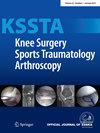A structured framework for standardized 3D leg alignment analysis: An international Delphi consensus study
Abstract
Purpose
To reach consensus among international experts on a structured framework for standardized 3D leg alignment analysis based on 3D bone models, ensuring consistency and improving clinical applicability.
Methods
A Delphi study was performed in four rounds. Rounds 1 and 2 involved a steering and rating group that developed statements based on principles preserving the 3D complexity of anatomical structures, identified through a systematic review. These statements encompassed approaches for deriving joint centres and joint orientations, and defining coordinate systems using 3D bone models. In Rounds 3 and 4, a panel of 35 international experts, including clinicians (54%) and engineers (46%), with participants from Europe (80%), Oceania (9%), Asia (6%), and the Americas (6%), evaluated these statements. Consensus was defined as ≥80% agreement.
Results
Rounds 1 and 2 resulted in 31 statements to be included in the survey. Of these, 26 achieved consensus in Round 3, with the five remaining statements refined and reaching consensus in Round 4. Experts agreed on utilising all available relevant surface data to define joint centres, joint orientations, and individual femoral and tibial coordinate systems alongside a combined leg coordinate system, and adopting central 3D axes for femoral version and tibial torsion.
Conclusions
This international Delphi consensus study provides a structured framework for a standardized 3D leg alignment analysis based on 3D bone models. This framework aims to enhance clinical applicability for preoperative planning and execution of uni- and multiplanar correction osteotomies around the knee, reduce the methodological variability in 3D leg alignment analysis literature, and improve cross-study comparability.
Level of Evidence
Level V.





 求助内容:
求助内容: 应助结果提醒方式:
应助结果提醒方式:


